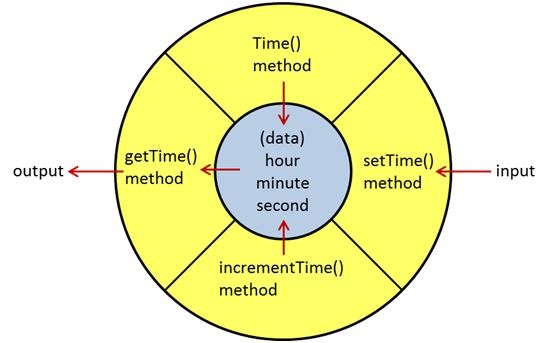What is Encapsulation?
With structures, the functions that make up
the program, and the data the functions operate on,
are separate. In an object-oriented
program, they are combined. This process of wrapping up procedures and data
together is called encapsulation.

Encapsulation is used to enforce the principle of data hiding, and, to allow your objects to enforce their own invariants, as we saw in the last chapter. With encapsulation, the data members defined inside a class are accessible to all the member functions defined inside the same class, but cannot be accessed by methods outside that class.
As you saw with the Time structure, making the data publicly accessible risks accidental data corruption as a result of a bug in someone else's code. The struct version of the Time type provides no abstraction and no encapsulation.
The Time interface is its implementation–the operations that clients can perform on the Time object are simply direct manipulation of its data. Changing the implementation thus changes the interface, which is why changing the data members breaks existing code.
 This course content is offered under a
This course content is offered under a